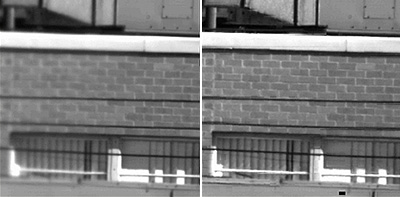Imaging Science
AOA Xinetics strives to be on the forefront of innovative imaging technology. Computational power has been a necessary ingredient for the successful implementation of traditional adaptive optics over the past several decades.
AOA Xinetics strives to be on the forefront of innovative imaging technology. Computational power has been a necessary ingredient for the successful implementation of traditional adaptive optics over the past several decades.
AOA Xinetics strives to be on the forefront of innovative imaging technology. Computational power has been a necessary ingredient for the successful implementation of traditional adaptive optics over the past several decades. Likewise as computers become even faster and inexpensive then more complicated and computationally intensive imaging modalities become possible. We have recently investigated three of these cutting edge technologies; Lucky Imaging, Sequential Phase Diversity and Modal Image Optimization. Our goal is to shepherd novel ideas from academia and research institutions into deployable technology. We have developed a large suite of image processing software units that can be utilized for the rapid prototyping of virtually any processing chain required.

Lucky Imaging Experimental Data (enhanced image is on right)
A turbulence-induced micro-lensing phenomenon enables the capture of high-resolution image information that is otherwise lost. "Lucky images" occur infrequently, but all frames frequently have "lucky regions". We have implemented a tiled version of lucky imaging. From a stack of frames we search for regions of goodness, based on an image quality metric, and then stitch them together. This process can occur continuously to form a movie or video feed. The output frame rate will be slower than the camera FPS, but fast enough for many missions.

Sequential Diversity Imaging - Simulation Results (imaging a satellite)
SDI is implemented in a system that includes a Deformable Mirror (DM) and a high frame rate imager in the optical path. After the initial convergence the system will apply small corrections to the DM at each frame update. These changes to the DM wavefront form the phase diversities and the sequential images are the measurement set for the phase diversity algorithm. Because the frame to frame phase changes are necessarily small the convergence is very rapid. The figure shows the results of a numerical simulation of SDI where the wavefront is changing with a time constant of about 10 frames. After the initial capture, the SDI process maintains near diffraction limited image quality despite the varying aberration of about 0.3 waves rms.

Original Image
Corrupted Image
Corrected Image
Modal Image Optimization – Simulation Results
MIO is another scheme to perform "sensorless" AO where the far field image is used to determine the shape to apply to a deformable mirror. Karhunen–Loève decomposition is used to generate natural modes of the system, then small perturbations of each mode in turn applied to the mirror, and the effect on an image metric is measured. The key is to match the metric to the anticipated imagery. For instance, the metric to optimize the image of a forest will be a different type than the metric used to optimize a cityscape. It is an iterative process and with properly matched metric is very robust performance even with large starting wavefront error. This method is applicable to compensation of thermal, mechanical and gravitational disturbance of imaging systems.